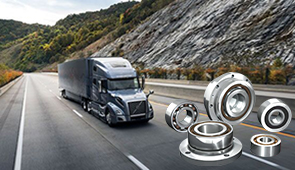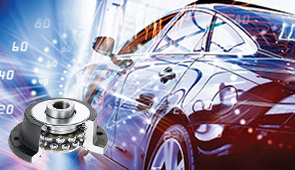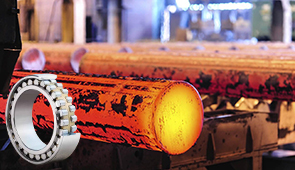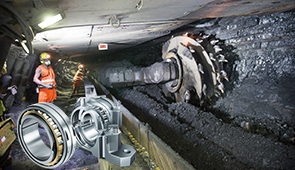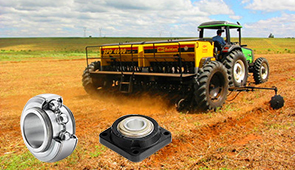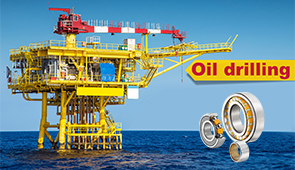Understanding the Differences: Sleeve Bearing vs Ball Bearing in Cooling Fans
Cooling fans are critical components in a wide range of applications, from personal computers to industrial equipment, ensuring that systems remain within optimal operating temperatures. However, not all cooling fans are created equal, and the type of bearing they use plays a significant role in their performance, durability, and efficiency. Two of the most commonly used bearing types are sleeve bearings and ball bearings, each offering distinct advantages and trade-offs. This article explores the key differences between sleeve bearing and ball bearing cooling fans, providing valuable insights to help you select the right option for your specific requirements. Whether you’re prioritizing lifespan, noise levels, or cost-efficiency, understanding these differences is essential to making an informed decision.
What Are the Key Differences Between Sleeve Bearings and Ball Bearings?
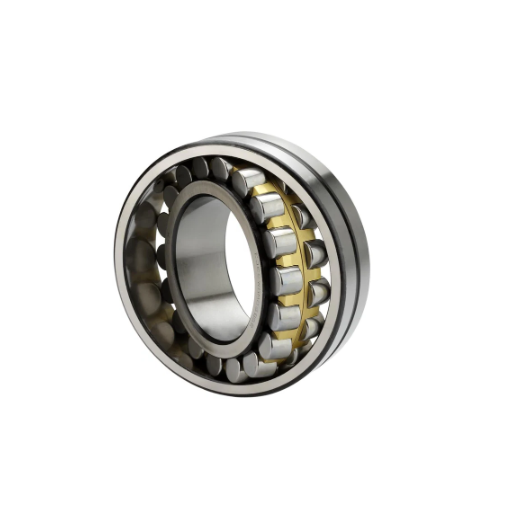
How Do Bearing Types Affect Performance?
Cool fan performance is highly influenced by bearing types with regard to durability, noise, and overall efficiency. For example, sleeve bearings are both inexpensive and simple in design. Even though they operate at very low speeds without making noise, their long-range performance, especially in heating vents, is prone to wearing down and losing lubrication flow efficiency, which results in higher temperatures. Their lifespan is generally shorter compared to ball bearings. Their relatively low performance compared to ball bearings in controlled settings makes them more applicable where cost, low noise, and low long-term durability are the prime considerations.
In contrast, ball bearings use rolling elements and therefore have less friction, which makes movement smoother. They are far more durable and can endure high temperatures for prolonged periods of time. Such advantages make ball bearings the best choice for high-performance or industrial operations where dependability is critical. They are also more expensive compared to sleeve bearings and do make a bit more noise, but the need for reliability in tough scenarios makes ball bearings justifiable due to their long lifespan and the need to preserve them in demanding settings.
The selection of bearing type must align with sensitivity, running conditions, as well as maintenance needs. For instance, environments with severe and frequent temperature changes, or where the fan runs under demanding cycles, derive unmatched robustness from ball bearings. However, in situations where the performance requirements are low and there are financial limitations, sleeve bearings are often adequate. These trade-offs need to be understood to design balanced systems in terms of fan efficiency and cost.
Comparing Friction and Noise Levels in Bearings
Friction and noise levels are critical factors in the performance comparison of ball bearings and sleeve bearings. The friction in ball bearings is lower because of rolling contact, which facilitates smoother operations as well as higher speeds for rotation. Because of this design, ball bearings experience lower energy losses due to mechanical resistance, therefore being suitable for high-performance applications. They do produce substantial noise while running at high speeds and under heavy loads due to the vibrations that can amplify the noise coming from rolling elements.
In contrast, sleeve bearings use sliding contacts, which tend to have higher friction under normal operating conditions. Although this contributes to excess heat and restricts the speed of rotation, sleeve bearings operate silently when properly lubricated. Their firm and steady motion makes them perfect for applications where rotational and operational noise has to be kept at a minimum, like in residential and office equipment, where moderate speeds and loads are considered.
While choosing between sleeve and ball bearings for a certain application, these factors should be considered in conjunction with operational requirements. For systems that operate at high speeds, require high efficiency with comparatively low noise, ball bearings are a better option. On the other hand, sleeve bearings are better for scenarios where lower noise levels and cost efficiency are prioritized over extreme speed capabilities. This comparison highlights the need for matching bearing features with application requirements to achieve optimal performance.
The Role of Metal Balls in Ball Bearings
The friction encountered in the rotation of ball bearings is minimized by the metal balls, which transform the rotary motion into translational motion (rolling motion). Mechanically, these balls are held as rolling bodies in between the inner and outer raceways. Due to the design, the contact area is reduced, and hence, in the movement, frictional resistance is less. Efficient energy transfer is possible with minimal wear and tear, thus improved performance is achieved in many mechanical systems.
The composition of the metal ball is vital to determining how long the ball bearing will last. Commonly used materials include hardened steel or ceramic because they do not get deformed easily, can support heavy loads, and still function under extremely high temperatures or highly corrosive environments. This ensures that the bearings can rotate under varying loads and will not fail under stress.
Moreover, the degree to which the bearing works is influenced by the engineering precision of the metal balls. Their size, smoothness, and uniformity are of utmost importance. If any of these are changed, the ball bearing may become imbalanced, louder, or wear out faster than needed. Because of this, strong mold and manufacturing processes and quality control checks are put into place to ensure that the metal balls produced and the molds used will meet international standards and perform well in various fields such as automotive, industrial, and aerospace.
How Do Sleeve Bearings Work in Cooling Fans?
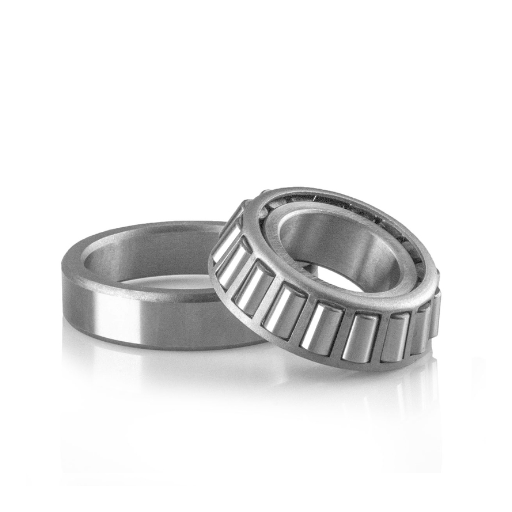
Exploring the Lubrication Process
When it comes to sleeve bearings, the lubrication stage involves milled procedures that aid in lowering friction, increasing smooth rotation, lowering wear, and increasing the life of the cooling fans. While sleeve bearings use oil-impregnated materials, external lubricating agents can also be utilized to create and maintain a film of lubricant between the bearing surface and shaft. This film assists in the prevention of direct contact between metals, which is important to avert improper rotation and molten center pyrolysis, which leads to overheating.
Self-lubricating sleeve bearings are crafted from porous structures that trap lubricant within their volumes. The movements and thermal expansion that take place during the working period lead to the elution of lubricant on top of the bearing surfaces. This approach is friendly for low to moderate load deals and is advantageous for periods of long sustainability while lowering the need for maintenance.
Reservoirs that are sealed or grooves can be designed into the bearing, which allows for periodic lubrication using an external device. To maintain baseline performance benchmarks, lubricating oil of satisfactory quality and viscosity paired with thermal stability should be used, which is often bespoke to set operating temperatures and speeds needed from the cool fan. Specialized compositions could add further oxidation resistance, decrease degradation upon aging, and increase lifespan.
The right lubrication on sleeve bearings has a wear rate reduction of almost 50%. This also contributes to better life expectancy due to equipment functionality. This goes to show that contemporary cooling fans can meet their performance requirements under severe use conditions like constant use or high temperature usage.
Benefits and Advantages of Sleeve Bearings
Sleeve bearings have distinct advantages over other types of bearings, making them a common choice in different industrial and mechanical settings. Their streamlined design promotes low-cost manufacturing, which in turn provides an economical bearing solution without compromising performance. Moreover, their simplistic design ensures robust construction, which increases the reliability of the sleeve bearing, particularly in moderate speed and load applications.
Perhaps the most advantageous characteristic of sleeve bearings is their ability to operate silently. As compared to rolling-element bearings, sleeve bearings do not have any metal-to-metal contact between moving parts, which significantly reduces noise creation. In addition, certain lubricants such as polytetrafluoroethylene (PTFE) or oil-impregnated materials make sleeve bearings self-lubricating and ensure prolonged operation with minimal maintenance.
Some other notable sleeve bearing properties are its ability to effectively manage and reduce frictional heat, making heat dissipation easier, an important factor for cooling fans where consistent thermals and operation are essential. According to analytical data, sleeve bearings achieve a striking 80-90% reduction in vibration as compared to all other types of bearings, which also drastically increases the lifespan of adjoining components.
Ultimately, with the proper seals, sleeve bearings prevent the entry of foreign particles better than other types of bearings. Thus, making them useful in harsh conditions. Golden opportunities arise because of the innovation in lubrication and materials engineering that make these bearings easy to obtain. This, along with the sleeve bearings’ simple design, makes these bearings cost-efficient, providing reliability that engineers can trust in mechanical systems.
Challenges and Disadvantages of Sleeve Bearings
Like any other system, sleeve bearings come with pros and cons that engineers need to take into account during design and application. One major drawback is the need for a steady supply of lubrication in order to control friction and wear. Damage or inadequate oil results in a rise in temperature, increased material decay, and burning out of the bearing. This makes it important to maintain systems diligently, especially for those operating at high speeds or high loads.
Another consideration includes the limited capacity of the bearing to support loads, which is less than that of rolling element bearings. Sleeve bearings’ operational efficiency tends to deteriorate in the presence of extreme forces and axial loads; the bearings perform best under moderate radial loads. Moreover, the materials components that make up the bearing impact its ability to resist wear, corrosion, and thermal expansion, thus introducing uncertainty in terms of performance under certain conditions.
Also, sleeve bearings can sustain “stick-slip” motion during startup, especially with low speeds. This is the case with insufficient lubrication, which causes uneven movement. This can cause damage to precision elements and increase wear over a duration of time. Lastly, it is deemed accurate that sleeve bearings have low production costs; however, their performance and durability hinge on alignment, incorporation, and the surrounding environment, which increases costs on maintenance and installation over time.
Why Choose Ball Bearings for Your Cooling Fan?
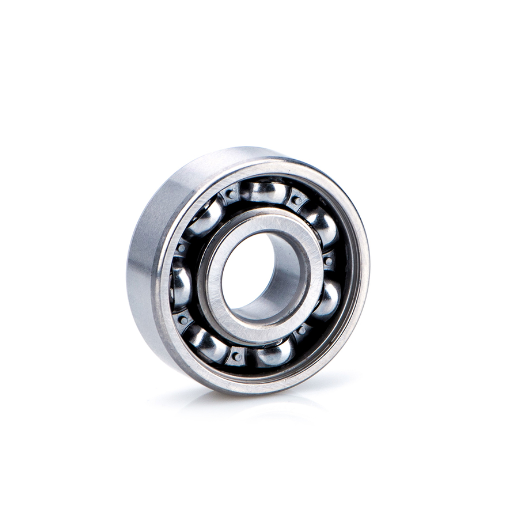
Understanding the Longer Lifespan of Ball Bearings
A robust design and friction minimization in rotating applications are the reasons why ball bearings last long. A ball bearing uses the rolling element type of mechanism; it uses hardened steel or ceramic balls, which minimize the movement of parts. Such a design greatly reduces surface contact as well as wear and heat generation and is therefore more durable than alternatives like sleeve bearings.
Ball bearings are also some of the most versatile tools because they can operate in many environments, including high-temperature and high-speed situations. Advancements in material science have made ball bearings perform even better, with innovations such as sealed designs that protect against dust and moisture as well as corrosion-resistant coatings. These innovations greatly extend the life of ball bearings even in difficult operating conditions.
Research done with cooling systems in the industry shows that ball bearings, when subjected to the same load and environmental conditions as sleeve bearings, outperform them by as much as five times. This case leads to low maintenance cycles, reduced downtime, and savings in overall cost. Therefore, ball bearings are the better choice for cooling fan systems that require dependable and high-performing tools that enhance reliability and efficiency, as well as lifespan.
How Ball Bearings Reduce Friction in Fans
The rolling mechanisms in ball or fan bearings comprise steel or ceramic spheres strategically positioned in a raceway, ensuring friction is minimized. Each fan bearing is designed in such a way that the offset contains friction sliding, like it would with sleeve bearings. Instead, it allows for rolling friction, which is less hindering and increases energy efficiency while decreasing operating temperatures in fan systems.
Ball bearings, for example, a type of fan bearing, are produced with strict granular control to ensure that their load is evenly distributed across the spheres. This precision reduces wear and maintains performance over time. Modern systems employ friction reduction mechanisms through advanced lubrication techniques, like specialized synthetic oils and greases. Oil-impregnated seals reduce frictional losses, diminishing the wear on the components while extending their lifespan.
The range of temperatures and speeds at which ball bearings operate is much higher than that of sleeve bearings, without the loss in efficiency. Unlike sleeve bearings, high-speed ball bearings lose little to no frictional coefficient. With ball bearings, it is between 0.001-0.005, which is drastically lower than the frictional coefficient of sleeve bearings. Ball bearings are more cost-effective and increase the energy efficiency, along with being mechanically reliable, which makes them more prevalent in commercial and industrial fan cooling systems.
The Impact of Higher Cost on Bearing Choice
Unlike sleeve bearings, ball bearings tend to cost significantly more, which can affect how an organization approaches its budget for large-scale projects. Even with this hefty price tag, the returns on performance, longevity, and operational efficiency make a compelling case in favor of ball bearings. Here are five factors that explain the difference in cost-benefit between ball bearings and other types of bearings:
- Reduced Replacement Frequency: Though ball bearings require more investment upfront, their long operational lifespan means needing to replace them less frequently. This is made possible through their superior durability and ability to withstand high-speed rotation and increased weight.
- Lower Overall Maintenance Requirements: Unlike many other bearing types, ball bearings need maintenance done less frequently. The reason is that the materials used to manufacture them, as well as their particular design, make for robust structures. This leads to reduced total maintenance costs in the long run, justifying the initial investment.
- Increased Operational Cost Savings: Ball bearings have a simply lower friction coefficient when compared to other bearing types, leading to less energy wasted in terms of expenditure. Thus, for energy-rich systems, ball bearings come highly recommended despite the cost implosion.
- Higher System Functionality: Ball bearings work exceedingly well under severe conditions like high speeds and changing loads, which is the case for high-performance machines. Thus, they are essential components where unparalleled reliability is a requirement.
- Minimized Downtime Potential: Because of their efficiency and durability, ball bearings help reduce system downtimes. These reduced inefficiencies can be highly dramatic for businesses dependent on efficient and continuous systems.
Although the higher price of ball bearings may discourage some initial buyers, their cost-effectiveness becomes
What Is a Fluid Dynamic Bearing and How Does It Compare?
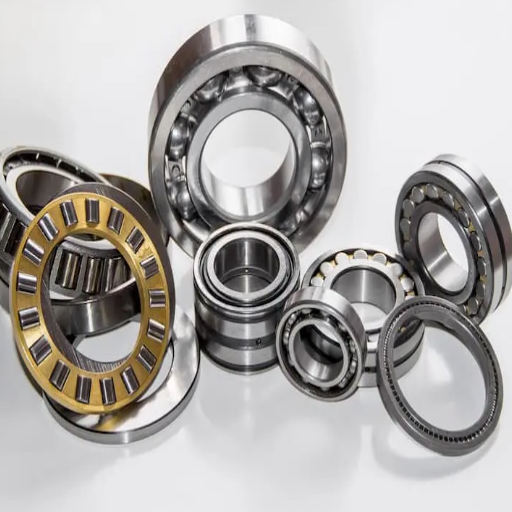
Advantages of Fluid Dynamic Bearings
Fluid dynamic bearings (FDB) possess numerous advantages compared to conventional ball bearings, especially for sophisticated and high-performance applications. Below are five important advantages of FDBs:
- Reduced Noise and Vibration: The noise and vibration generated by fluid dynamic bearings are significantly less than that of ball bearings. This is because the bearings in question do not have metal-to-metal contact owing to smooth hydrodynamic layers of fluid. Because of these, FDBs are very appropriate for applications such as hard drives in computers, cooling fans, and other machines that need to operate silently, which makes them ideally suited for smooth operation.
- Increased Lifespan: Reduced wear and tear is the result of the absence of mechanical contact between the moving parts for a longer operational life. For instance, the lifespan of an FDB found in cooling fans is more than 60,000 hours, which is under normal operating conditions and greatly exceeds the lifespan of traditional bearings.
- Increased Load Capacity: The ability of FDBs to sustain larger radial and axial loads is caused by the distribution of loads through thin layers of fluid. This is especially helpful in heavy-duty machinery or systems that are subjected to variable and high-stress operating environments.
- Supreme Stability and Accuracy: Accuracy and exceptional stability come as a prerequisite with propulsive fluid dynamic bearings. This level of accuracy is critical in high-speed rotational applications like aerospace components and optical devices, as even the slightest imprecision can cause catastrophic inaccuracies.
- Improved Heat Management: An FDB’s fluid not only serves as a lubricant but also assists in cooling and maintaining the optimal working temperature for the system. The reduction of overheating risks achieved by effective temperature control improves the reliability of the system in harsh applications.
The complexity of supporting structures and the advanced, unique advantages offered by fluid dynamic bearings make them ideal for applications where reliability, performance, and durability are crucial. The versatility of these bearings is evident with their growing use from consumer electronics to industrial machinery as more benefits become clear, showcasing their ever-increasing adaptability.
Compared to Sleeve Bearings and Ball Bearings
While ball bearings are reliable and versatile, offering ease of use, fluid dynamic bearings (FDB) are comparatively quieter and have the longest lifespan, and sleeve bearings are the most affordable but will age faster and are more prone to noise.
| Aspect | Fluid Dynamic | Ball Bearing | Sleeve Bearing |
|---|---|---|---|
|
Longevity |
100k-300k hrs |
60k-75k hrs |
30k-40k hrs |
|
Sound Level |
Very low |
Moderate |
Low initially |
|
Price |
High |
Medium |
Low |
|
Orientation |
Any direction |
Any direction |
Vertical best |
|
Robustness |
High |
Medium |
Low |
|
Use Case |
High-performance |
General-purpose |
Budget-friendly |
Applications in Specific Cooling Solutions
Fluid dynamic bearings (FDB) are widely used in modern cooling technologies because of their advanced performance features like noise reduction, thermal management, increased lifespan, and durability. Below are five applications where FDB technology improves cooling system performance:
- Cooling Fans in Consumer Electronics: FDB-based fans are incorporated in laptops, gaming consoles, and desktop computers. Their ability to work with minimal noise and high speed makes them perfect for thermoregulation without handling obtrusive noise.
- Server Rack Fans: Data center servers are continually running, thus producing enormous heat. In demanding environments, FDB cooling fans outperform sleeve or ball bearing alternatives in operational lifespan and efficiency, helping prevent overheating of data centers.
- Graphics Processing Unit (GPU) Cooling: GPUs are used for complex tasks like gaming and rendering, which create a lot of heat; thus, efficient cooling solutions are mandatory. Enhanced fan systems with FDB reduce vibrations while supporting high-speed rotation for maximum cooling and consistent cooling.
- Air Conditioning and HVAC Systems: Fluid dynamic bearings are also utilized in the cooling components of HVAC units. Their ability to operate reliably under high physical stress over long periods of time is important for providing smooth airflow and preventing failure for extended periods.
- Automotive Cooling Systems: Automotive electric fans used for cooling internal combustion engines or battery packs for electric vehicles benefit from FDB’s performance over extreme heat and continuous shaking.
Each of these applications demonstrates how broadly FDB technology is integrated into thermal management systems and how it extends the operational life of cooling technologies, increasing its usefulness across multiple sectors.
How to Choose the Right Bearing Type for Your Fan?

Considering Noise Levels and Performance
In my process of choosing a bearing type for a fan, I focus on the noise that the fan produces, as well as its operations, in order to suit the application requirements. Broadly, I look at the performance of the fan and choose FDB because of their considerable reduction of noise, fluid dynamic bearings, renowned for minimizing noise, which is set for many applications, while maintaining their fan efficiency. The design of FDB bearings translates to quieter performance even in high-duty cycles or continuous duty environments, due to their capability to reduce friction.
While the issues of noise must be addressed, other performance-related parameters are just as important. In combination with other parameters, I prioritize maintenance-free operational lifetime for load-bearing, temperature resistance, and other friction-induced heat aspects. For industrial or high-capacity systems, I focus on FDB because they deliver the longest operable life in harsh thermal and mechanical environments. Everything stated above also applies to standard use cases, minus sound efficiency and durability. With lower standards set, alongside some moderate sound issues, routine maintenance is manageable with less rigorous ball bearing settings.
In conclusion, selecting a bearing type involves integrating a carefully crafted compromise of noise and other performance criteria specific to the application. With minimal operational and environmental constraints and maintenance expectations, it is straightforward to determine whether FDB or another bearing option will serve the specific fan system best. This approach optimizes efficiency while also ensuring reliability over a wide range of applications. long-term reliability across varied use cases.
Evaluating Longevity and Lifespan
The factors affecting the reliability and performance of a bearing system, especially when it comes to its longevity and lifespan, require careful consideration in order to optimize performance and ensure dependability. Composition of the material is essential in this regard; high-grade alloys and certain engineered ceramics tend to outperform standard steel in terms of wear and thermal resistance. The operational load conditions are also critical, where high stress or variable loading may cause high-stress bearings to rapidly degrade if not accommodated for in the design. Contamination and inadequate lubrication also fall under essential factors due to their ability to alter lubrication, increase friction, accelerate wear, and cause failure.
Calculation of lifespan in order to meet technical assessment standards is mostly done using L10 life, which is a statistic defining the average duration in use until 90% of identical bearings will function without failure, given certain conditions. Supplementing were advanced computational tools, such as fatigue life modeling, has, through empirical testing and changing operational scenarios, removed the need for pre-existing conditions. The presence of moisture, extreme temperatures, and certain contaminants emphasizes the need for robust material selection and proper sealing, alongside improving cooling mechanisms, further adding to the list of environmental factors.
Taking these factors into account helps designers and engineers improve the performance and longevity of bearing systems. This systematic strategy is critical in rigorous industrial and commercial applications because it reduces maintenance staging as well as lifecycle costs while preserving operational reliability.
Making an Informed Buying Choice
All environmental components, alongside key operational factors, need to be considered in choosing the correct bearing systematically. Ensuring the bearing’s load capacity is at an optimal level range is one of the prerequisites, as it enables seamless bearing operations with radial and axial forces while simultaneously functioning without additional strain. Both static and dynamic loads should be analyzed by designers to confirm bearing capability, maintenance unclashed with rated limits.
Exceeding RPMs usually risks bearing failure. The risk combines with excess friction and subsequent heat generation as speed increases, making rotational speed another vital consideration. Mechanisms and lubricants used to construct bearings are custom-tailored to withstand the most extreme conditions of high-speed applications, making them the most desired in such settings.
Vibrations, contaminants, and temperature are just a fraction of the operating environment components to aid in the selection of bearing type. Additionally, the level of exposure also impacts bearing type selection. Such components outline the requirements for custom-tailored seal and corrosion materials. Stainless steel or ceramic use in corrosive environments requires additional specialized coating.
New developments like hybrid ceramic bearings, or bearings with monitoring sensors, help in optimizing performance, while also being able to send maintenance alerts before malfunctioning. Considering these factors together with detailed requirements for each application lets engineers pick performance, longevity, and cost-effective bearings all at the same time.
Frequently Asked Questions (FAQ)
Q: What is the primary difference between a sleeve bearing fan and a ball bearing fan?
A: The primary difference lies in their construction and operation. A sleeve bearing fan uses a cylindrical sleeve to minimize friction within the bearing housing, while a ball bearing fan uses the rolling action of ball bearings. This difference impacts the durability, noise level, and lifespan of the fan.
Q: How do bearings in cooling fans affect noise levels?
A: Bearings in cooling fans significantly impact noise levels. Sleeve bearing fans typically produce less noise than ball bearing fans because they operate more quietly at lower speeds. However, ball bearings produce less noise at higher speeds due to their efficient rolling mechanism.
Q: What are the advantages of using ball bearing fans in axial fans?
A: Ball bearing fans are often used in axial fans due to their ability to handle higher speeds and temperatures. Ball bearings can last longer and are more durable, making them suitable for specific applications that require robust performance and reliability.
Q: Why might one choose a sleeve bearing fan over a ball bearing fan?
A: One might choose a sleeve bearing fan over a ball bearing fan for applications where lower noise and cost are priorities. Sleeve bearings have a lifespan that can be sufficient for less demanding uses, and they are generally quieter at lower speeds compared to ball bearings.
Q: How does the oil supply affect the performance of sleeve bearing fans?
A: The oil supply within the bearing housing of sleeve bearing fans is crucial for minimizing friction and ensuring smooth operation. Proper lubrication helps extend the lifespan of the sleeve bearings and maintain their performance over time.
Q: What role does hydraulic bearing technology play in cooling fans?
A: Hydraulic bearing technology is a type of bearing used in cooling fans that combines features of both sleeve and ball bearings. It provides a stable and quiet operation with improved longevity by utilizing fluid dynamics to reduce friction and wear.
Q: Can ball bearing types be used in all cooling fans?
A: While ball bearing types can be used in many cooling fans, they are not always the best choice for every application. The selection of the appropriate bearing type for your cooling fan depends on factors like operating speed, environmental conditions, and noise considerations.
Q: Are sleeve bearings associated with lower costs compared to ball bearings?
A: Yes, sleeve bearings are generally associated with lower costs compared to ball bearings. This cost-effectiveness makes them a popular choice for applications where budget constraints are a consideration and where the demands on the fan are not excessively high.
Q: How does the choice between sleeve bearing vs ball bearing impact the lifespan of a cooling fan?
A: The choice between sleeve bearing vs ball bearing impacts the lifespan of a cooling fan significantly. Ball bearings are much more durable and can last longer in demanding conditions, whereas sleeve bearings have a shorter lifespan but are adequate for less intensive applications.
UCTH213-40J-300 with Setscrew(inch)
CNSORDERNO: Normal-duty(2)
TOGN: UCTH213-40J-300
SDI: B-R1/8
SD: 2 1/2
UCTH212-39J-300 with Setscrew(inch)
CNSORDERNO: Normal-duty(2)
TOGN: UCTH212-39J-300
SDI: B-R1/8
SD: 2 7/16
UCTH212-38J-300 with Setscrew(inch)
CNSORDERNO: Normal-duty(2)
TOGN: UCTH212-38J-300
SDI: B-R1/8
SD: 2 3/8
UCTH212-36J-300 with Setscrew(inch)
CNSORDERNO: Normal-duty(2)
TOGN: UCTH212-36J-300
SDI: B-R1/8
SD: 2 1/4
UCTH211-35J-300 with Setscrew(inch)
CNSORDERNO: Normal-duty(2)
TOGN: UCTH211-35J-300
SDI: B-R1/8
SD: 2 3/16
UCTH211-34J-300 with Setscrew(inch)
CNSORDERNO: Normal-duty(2)
TOGN: UCTH211-34J-300
SDI: B-R1/8
SD: 2 1/8










